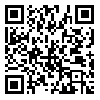Volume 14 - Special Issue, Vol.14,
irje 2019, 14 - Special Issue, Vol.14,: 72-81 |
Back to browse issues page
Download citation:
BibTeX | RIS | EndNote | Medlars | ProCite | Reference Manager | RefWorks
Send citation to:



BibTeX | RIS | EndNote | Medlars | ProCite | Reference Manager | RefWorks
Send citation to:
Yazdi Feyzabadi V, Mehrolhassani M, Iranmanesh M. Evaluation of Medication Consumption Indices in Iran from 2012 to 2015: A Descriptive Study. irje 2019; 14 :72-81
URL: http://irje.tums.ac.ir/article-1-6146-en.html
URL: http://irje.tums.ac.ir/article-1-6146-en.html
1- Assistant Professor, PhD in Health Policy, Social Determinants of Health Research Center, Institute for Futures Studies in Health, Kerman University of Medical Sciences, Kerman, Iran
2- Associate Professor, PhD in Health Services Management, Medical Informatics Research Center, Institute for Futures Studies in Health, Kerman University of Medical Sciences, Kerman, Iran
3- MSc in Health Services Management, Health Services Management Research Center, Institute for Futures Studies in Health, Kerman University of Medical Sciences, Kerman, Iran ,mahlairanmanesh1991@gmail.com
2- Associate Professor, PhD in Health Services Management, Medical Informatics Research Center, Institute for Futures Studies in Health, Kerman University of Medical Sciences, Kerman, Iran
3- MSc in Health Services Management, Health Services Management Research Center, Institute for Futures Studies in Health, Kerman University of Medical Sciences, Kerman, Iran ,
Abstract: (6158 Views)
Background and Objectives: A significant portion of the total health expenditure is related to medicines. Evaluation of medication system indicators forms a basis for modifying the consumption pattern and cost containment. Therefore, the present study was conducted to investigate the trend of medication consumption indicators in Iran.
Methods: In this descriptive-cross-sectional study, medicine consumption per capita was calculated based on the medicine type, medicine form, and treatment category. The data were extracted from the Pharmacological Statistics of the Food and Drug Administration and the Statistics Center of Iran between 2012 and 2015. Catzung categorization was used for treatment categories. Data were analyzed using descriptive statistics and annual growth index by Excel 2013 software.
Results: During the study years, the highest medicine consumption per capita was related to metformin 500 (18.52), ranitidine 150 (15.45), and adult cold (15.29). The highest average consumption per capita in different treatment categories was related cardiac medications (97.65). The lowest and highest growth rates were related to glibenclamide 80 with -12% in 2014 and metformin 500 with 16.9% in 2013, respectively. Tablets were the most widely used form of medicine.
Conclusion: According to the results, medicine consumption per capita in Iran is higher than developed countries. Cardiac and diabetes medications have a high consumption per capita in Iran compared to other medications. Therefore, in order to rationalize drug prescription, strengthening the clinical evaluation system is recommended by developing and implementing clinical guidelines for common and high-cost diseases.
Methods: In this descriptive-cross-sectional study, medicine consumption per capita was calculated based on the medicine type, medicine form, and treatment category. The data were extracted from the Pharmacological Statistics of the Food and Drug Administration and the Statistics Center of Iran between 2012 and 2015. Catzung categorization was used for treatment categories. Data were analyzed using descriptive statistics and annual growth index by Excel 2013 software.
Results: During the study years, the highest medicine consumption per capita was related to metformin 500 (18.52), ranitidine 150 (15.45), and adult cold (15.29). The highest average consumption per capita in different treatment categories was related cardiac medications (97.65). The lowest and highest growth rates were related to glibenclamide 80 with -12% in 2014 and metformin 500 with 16.9% in 2013, respectively. Tablets were the most widely used form of medicine.
Conclusion: According to the results, medicine consumption per capita in Iran is higher than developed countries. Cardiac and diabetes medications have a high consumption per capita in Iran compared to other medications. Therefore, in order to rationalize drug prescription, strengthening the clinical evaluation system is recommended by developing and implementing clinical guidelines for common and high-cost diseases.
Keywords: Drug consumption per capita, Cardiovascular drugs, Diabetes medications, Medicine form, Iran
Type of Study: Research |
Subject:
Epidemiology
Received: 2019/01/20 | Accepted: 2019/01/20 | Published: 2019/01/20
Received: 2019/01/20 | Accepted: 2019/01/20 | Published: 2019/01/20
Send email to the article author
| Rights and permissions | |
 |
This work is licensed under a Creative Commons Attribution-NonCommercial 4.0 International License. |





